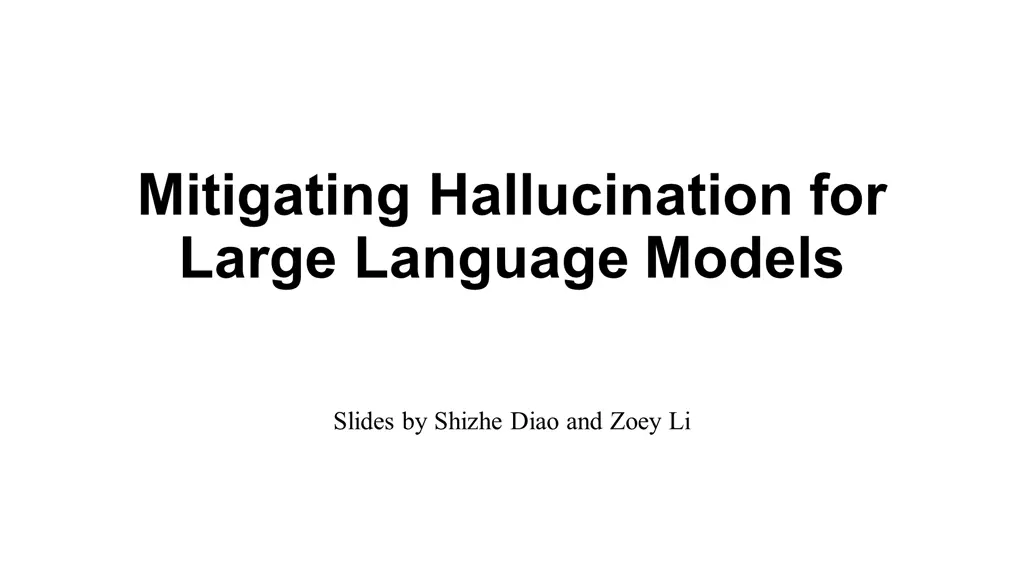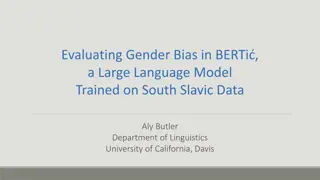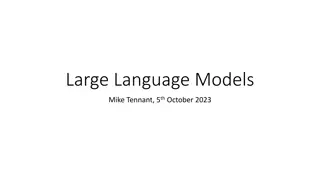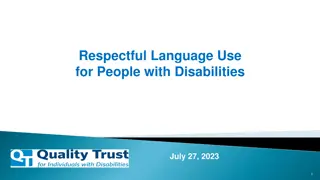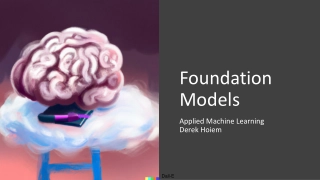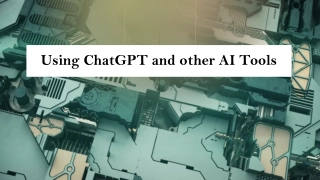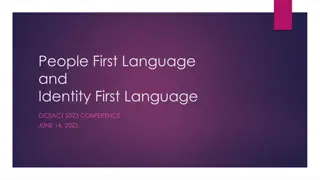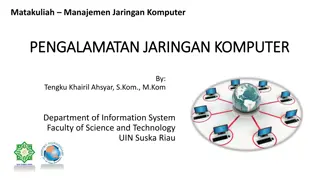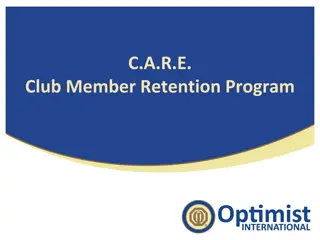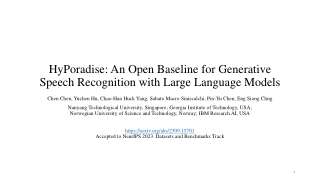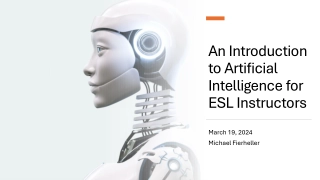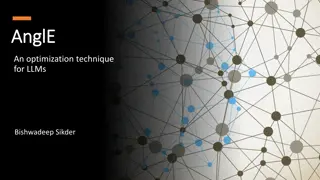Addressing Hallucination in Large Language Models
Explore the challenges of hallucination in language models, including examples and potential solutions to improve fidelity and factualness in generated text. Learn from research findings to mitigate hallucination biases.
Download Presentation
Please find below an Image/Link to download the presentation.
The content on the website is provided AS IS for your information and personal use only. It may not be sold, licensed, or shared on other websites without obtaining consent from the author. Download presentation by click this link. If you encounter any issues during the download, it is possible that the publisher has removed the file from their server.
Presentation Transcript
Mitigating Hallucination for Large Language Models Slides by Shizhe Diao and Zoey Li
Limitations An example of a hallucination. ChatGPT describes the content of an article that does not exist. Source: Wikipedia Source: The Harvard Gazette
What are Hallucinations? Faithfulness : Generated text is not faithful to the input context Factualness : Generated text is not factually correct with respect to world knowledge Ji, Ziwei, et al. "Survey of hallucination in natural language generation."
Why language models hallucinate? Pre-training Data: Contradicting information, Inaccurate knowledge [1] Knowledge bias from repeated data [1] Model: Autoregressive nature of language modelling [2] Exposure bias [3] Incorrect parametric knowledge [4] [1] Lee, Katherine, et al. "Deduplicating training data makes language models better." arXiv preprint arXiv:2107.06499 (2021). [2] Lee, Nayeon, et al. "Factuality enhanced language models for open-ended text generation." Advances in Neural Information Processing Systems 35 (2022): 34586-34599. [3] Wang, Chaojun, and Rico Sennrich. "On exposure bias, hallucination and domain shift in neural machine translation." arXiv preprint arXiv:2005.03642 (2020). [4] Longpre, Shayne, et al. "Entity-based knowledge conflicts in question answering." arXiv preprint arXiv:2109.05052 (2021).
LM Hallucination and Bias 30% of abstractive summaries contain unfaithful information by state-of-the-art models (Cao et al, 2018) Examples of fabricated answers in movie question answering Q: What did Susie promise to one of the waiters at the Copacabana Club in return for smuggling her into the club for free? System: Susie promises to buy one of the men a drink after every act. Key: Susie promised him a prime slot for his singing act at the Gaslight Caf for 2 weeks. Unfortunately Susie thinks his act is awful but keeps her word even since they had to watch the show from the kitchen. Q: What do Midge and Susie fight over? System: Their son. Key: With emotions on high, Susie confronts Midge about why she hired Herb. Midge felt Susie does not help and sabotaged her earlier because Susie rushed her on stage. Midge tells her she wants to quit and, after a few insults at each other, walks away. Q: What do Susie and Midge talk about when Midge visits Susie's home? System: Susie and midge talk about the upcoming moon landing. Key: Susie confronts Midge about her meeting with Randall and his agent. She tells Midge she does not need a man to help with her set and what she is doing is not stand-up, it's being the annoying party guest. Midge breaks down crying and tells Susie her life has been hard and if Susie wants to be her manager, she has to deal with Midge's personal matters and not run away. After this, Susie comforts Midge. Q: How were some of the Navy Seal members killed back in America? System: In a scuffle in france the four members of the navy were killed. Key: One was run over by a truck while throwing trash in the sideback. One was shot during a car drive. Bias from LM [Wang et al., INLG2018] Silvi Jan (born 27 October 1973) is a former Israel. He played for Israel women s national football team, Potential solutions: filter out popularity bias, incorporate more scenario-specific/domain-specific knowledge 5
How to solve Hallucination problem?: Hallucination Knot [Fillippova et al., 2020]
How to solve Hallucination problem?: Hallucination Knot [Dziri et, 2021]
How to solve Hallucination problem?: Hallucination Knot [Dziri et, 2021]
SelfCheckGPT Intuition: If an LLM has knowledge of a given concept, sampled responses are likely to be similar and contain consistent facts. footballer footballer Lionel Messi is a ___ John Smith is a ___ footballer carpenter footballer worker Manakul, Potsawee, Adian Liusie, and Mark JF Gales. "Selfcheckgpt: Zero-resource black-box hallucination detection for generative large language models."
SelfCheckGPT Manakul, Potsawee, Adian Liusie, and Mark JF Gales. "Selfcheckgpt: Zero-resource black-box hallucination detection for generative large language models."
HALO User question Sampled responses Sample 1. Sample 2. Sample 3. Sample 4. Sample 5. Sent-level pairwise entailment Small LLM Score Elaraby, Mohamed, et al. "Halo: Estimation and Reduction of Hallucinations in Open-Source Weak Large Language Models."
Hallucination Verification SelfCheckGPT: BERTScore QA-based evaluation metric N-gram language models HALO: Entailment
LM vs LM Cross-examination Cohen, Roi, et al. "LM vs LM: Detecting Factual Errors via Cross Examination."
LM vs LM Please answer the following questions regarding your claim Do you have any follow-up questions? Please answer with Yes or No Cohen, Roi, et al. "LM vs LM: Detecting Factual Errors via Cross Examination."
Multiagent Debate Reflection + multiagent Du, Yilun, et al. "Improving Factuality and Reasoning in Language Models through Multiagent Debate."
Multiagent Debate Du, Yilun, et al. "Improving Factuality and Reasoning in Language Models through Multiagent Debate."
CRITIC Stopping criteria: - Maximum iterations - The answer remains the same for two rounds Gou, Zhibin, et al. "Critic: Large language models can self-correct with tool-interactive critiquing."
CRITIC Gou, Zhibin, et al. "Critic: Large language models can self-correct with tool-interactive critiquing."
Summary Retrieval-based methods: REALM LLM-Augmenter Self-Checker PKG Verification-based methods: SelfCheckGPT HALO LM vs LM Multiagent Debate CRITIC
Controlled Generation - Increasing Faithfulness in Knowledge-Grounded Dialogue with Controllable Features, ACL 21 Disentqa: Disentangling parametric and contextual knowledge with counterfactual question answering. ACL 23 Large Language Models with Controllable Working Memory. ACL 23 Findings - - Main idea: introduce a switch to the LM, so that it can be faithful when needed. 22
Increasing Faithfulness in Knowledge-Grounded Dialogue with Controllable Features - Motivation: in knowledge-grounded dialog, the response should be faithful to the grounding document Datasets include a mixture of response styles, including first-person, subjective response that are NOT faithful if we directly train on this dataset, the model will not learn to be faithful The solution: disentangle the different styles - - Example from information seeking dialog dataset. 23
Identifying Response Styles - Identifying different styles by heuristics: - Objective voice (check if the first person singular pronoun appears) - Lexical precision (unigram overlap between the response and the evidence) - Entailment (check if the response is entailed by the evidence) This gives us pseudo-labels on the responses! - Example from information seeking dialog dataset. 24
Training with Control Codes - - Fine-tune the model with control codes as extra input (similar to the CTRL model) Perform inference with the control codes that maximize faithfulness ((high entailment, high lexical precision, objective voice) 25
The model does not always follow the control code though Control Codes Ablation 26
Disentqa: Disentangling parametric and contextual knowledge with counterfactual question answering A language model has two separate sources of knowledge: - parametric knowledge which is obtained during pre-training contextual knowledge which is provided at the time of generation. Faithfulness = enforcing the use of contextual knowledge - - 27
Teach Disentanglement by Counterfactual Augmentation - Make the model produce 2 different answers from a single input How? Change the input context to yield a counterfactual answer (make it different from the answer in the model s parametric memory) - 28
Answerability Augmentation - In addition to counterfactual augmentation, the dataset also includes unanswerable examples, to teach the model to abstain from answering when the context is irrelevant. 29
Evaluation Base model: T5 XXL f means the original factual answer. Training with counterfactual augmentation and answerability augmentation improves both factual and counterfactual accuracy. 30
Large Language Models with Controllable Working Memory The idea is nearly identical to the DisEntQA paper. 32
Thoughts - Disentanglement of different generation styles could be important for improving faithfulness - LMs are also trained on a mixture of different language styles so they don t know when to be faithful This approach relying on fine-tuning the model, are there alternatives for LLMs? Is there a better way to get faithfulness control codes? - - 33
